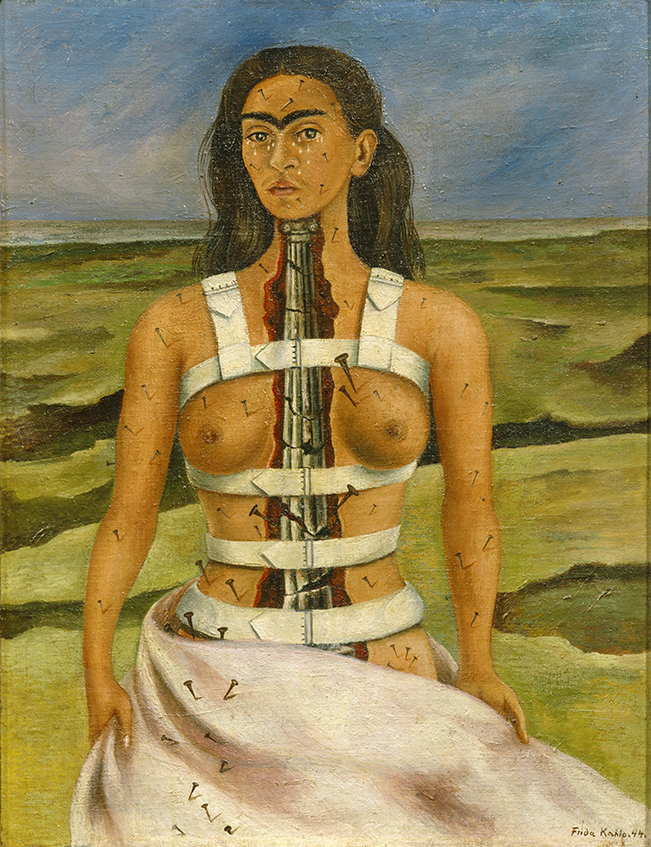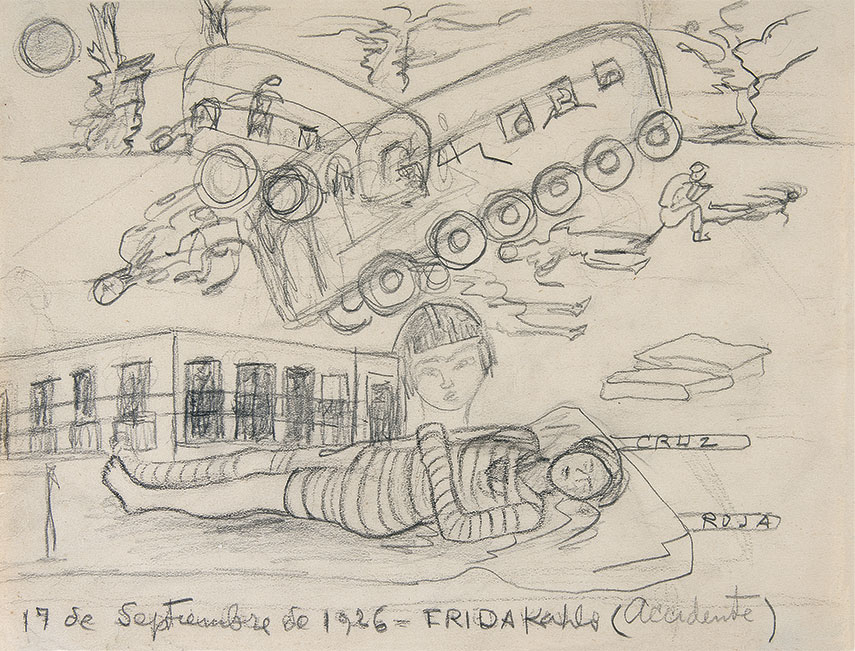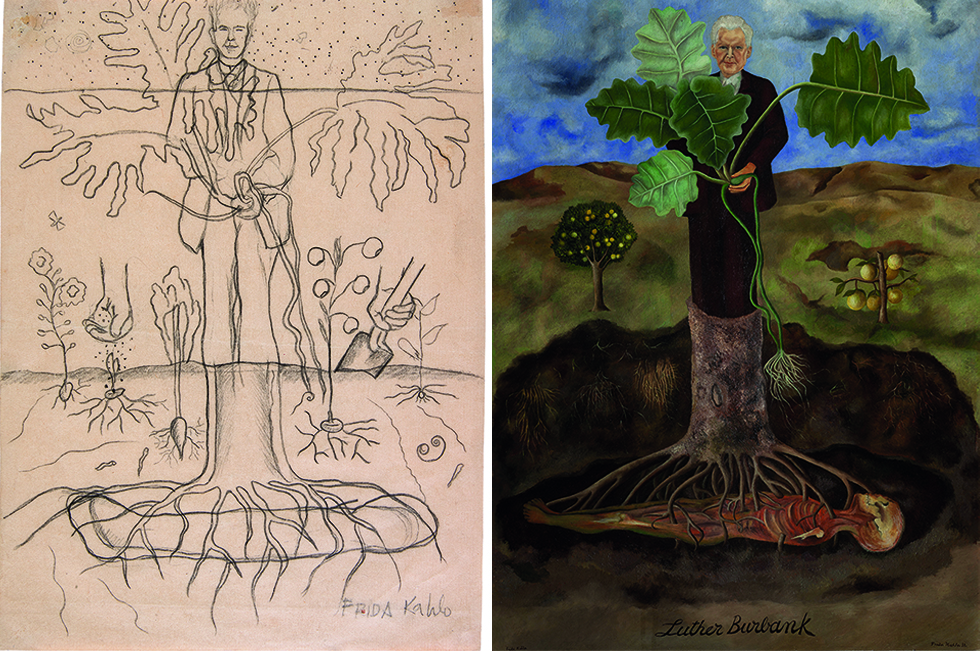Frida Kahlo, the artist who met life head-on
How does an artist become a global icon? Frida Kahlo revealed her unique personality through her art, paintings that also managed to express the secret world of countless women who didn’t have the opportunity to make their voices heard. Today, her persona transcends the boundaries of art. We commemorate two crucial dates in Frida Kahlo’s life: she was born on 6 July 1907 and died on 13 July 1954.
“I paint my own reality”
Her oil paintings and drawings reveal the secrets of her subconscious. She painted scenes that connect local influences with a universal language and left the world a series of self-portraits that have turned her face into a symbol. Her gaze is a dominant element in all her art, moving us still today with its timeless force.
Frida Kahlo’s art speaks of physical pain and also of mental suffering: her health was fragile and she longed for children, which she was unable to have because of her poor health. Her love life was intense and uninhibited; she also went through a series of heartbreaks and the thought of loneliness was agonising for her.

The Broken Column, 1944. Museum Dolores Olmedo, Mexico City. ©Album
© 2021 Banco de México Diego Rivera & Frida Kahlo Museums Trust. Av. 5 de Mayo No. 2, col. Centro, alc. Cuauhtémoc, c.p. 06000, Mexico City
An artist with instinct
Frida Kahlo started drawing at the age of 15, but she wouldn’t turn to painting until after her tragic accident in 1925, when she was 18 and riding a tram with her boyfriend. She was bed-ridden for almost a year.
She had received only basic artistic training at the time but still let herself be guided by her instinct, with results that showed confident brushstrokes and expressive originality from the outset. Her traumatic experience was the source of inspiration for her first major piece: the drawing called The Accident (1926).

The Accident, 1926. Juan Coronel collection.
© Photo: Rafael Doniz © 2021 Banco de México Diego Rivera & Frida Kahlo Museums Trust. Av. 5 de Mayo No. 2, col. Centro, alc. Cuauhtémoc, c.p. 06000, Mexico City
Art as survival
Her Henry Ford Hospital (1932) was painted during another hospital stay. She used the painting to work through her experience, to reinvent herself in order to survive, just like she had after the accident. She used a special easel that that would allow her to work while lying down in bed.
“Frida began work on a series of masterpieces which had no precedent in the history of art – paintings which exalted the feminine quality of truth, reality, cruelty and suffering”, said Diego Rivera of his wife’s creative phase during this time.

Portrait of Luther Burbank, 1931. Juan Coronel collection © Foto: Rafael Doniz / Portrait of Luther Burbank, 1931, Museum Dolores Olmedo, Mexico City © Album/akg-images
© 2021 Banco de México Diego Rivera & Frida Kahlo Museums Trust. Av. 5 de Mayo No. 2, col. Centro, alc. Cuauhtémoc, c.p. 06000, Mexico City
“Painting completed my life”
On the one hand, Frida Kahlo was vitality personified; on the other, the representation of the body’s fragility. She had an imaginary friend as a child, the source of her The Two Fridas (1940), and this concept of division is one that often comes up in her work.
She projected an image of strength in her self-portraits because she felt vulnerable and didn’t want to appear as a mere character surrendered to her fate. Instead, we see a self-confident woman, aware of her misery, watching us and demanding our attention.
“I have always worked following the spontaneous impulse of my feelings”
Frida was skilled at adapting surrealism’s influence to her way of expressing intimate emotions. In her work, the real world is faithfully represented, but its true meaning comes from the artist’s inner world, even when she painted landscapes and still lifes.
Frida Kahlo attended her first and only solo exhibition in Mexico in 1953. On bed rest after an operation, she made an incredible entrance by arriving in an ambulance and died shortly afterwards. She could never have imagined that she would become a global icon.

Autorretrato en la frontera de México y los Estados Unidos, 1932. Particular Collection. © Erich Lessing/Album
© 2021 Banco de México Diego Rivera & Frida Kahlo Museums Trust. Av. 5 de Mayo No. 2, col. Centro, alc. Cuauhtémoc, c.p. 06000, Mexico City
The private universe of Frida Kahlo, at your fingertips
- ARTIKA presents the first book that brings together Frida Kahlo’s drawings along with a thorough analysis of this little-known facet of her art.
- The Dreams of Frida Kahlo: a limited edition that unveils the artist’s secrets, passions, fears and fantasies.

Featured photo: Frida Kahlo in bed, painting the picture My family, 1949. © Album/Granger, NYC
© 2021 Banco de México Diego Rivera & Frida Kahlo Museums Trust. Av. 5 de Mayo No. 2, col. Centro, alc. Cuauhtémoc, c.p. 06000, Mexico City
